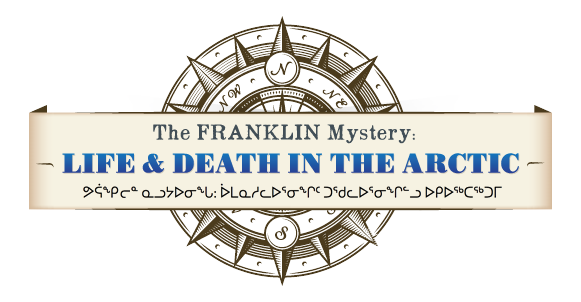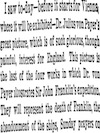Dr. Payer's Starvation Cove (1884)
Paris Dispatch to the London Times, Jan. 29.
I saw to-day – before it starts for Vienna, where it will be exhibited – Dr. Julius von Payer's great picture, which is of such glorious, though painful, interest for England. This picture is the last of the four works in which Dr. von Payer illustrates Sir John Franklin's expedition. They will represent the death of Franklin, the abandonment of the ships, Sunday prayers on the snow, and, lastly, "Starvation Cove." The picture I have just seen depicts the death of eight survivors of the expedition facing Esquimaux Bay, five leagues from where they would have been saved. The point to dwell upon here is that the artist is a man who has himself made an expedition similar to that of Franklin and his companions, has also lived in the polar regions, has undergone the most terrible privations in those icebound lands, and who, after all this experience, after observing and studying their scenery, returns to the civilized world and devotes himself to depicting, in a picture of startling and touching realism, how the last members of the Franklin expedition met their death.
Nor need I sketch Payer's career. The English public still remembers how, on the return of the two Austro-Hungarian expeditions of 1870 and 1874, Payer went to England at the invitation of the Royal Geographical Society, and how the narrative he gave of the expedition was one of the greatest possible interest. He then set to work collecting materials and details for his pictures. He saw the venerable Lady Franklin, Capt. Crozier's betrothed, most of the leaders of the subsequent expeditions, the Admiralty authorities, and, in short, everybody who could give him particulars of the expedition. It is even said that having gone to Admiral Watson at Chatham, to examine some old vessels of the Erebus and Terror kind, he was invited to breakfast on one of the old ships which he visited ; and on inquiring at dinner how Franklin's cabin in the Erebus was carpeted, Lady Watson rose and cut out a bit of the dining-room carpet, which she gave to Payer as being of exactly the same pattern. Every facility, indeed, was offered him. He was shown models of the scientific instruments, of the uniforms of the crews, and portraits of the chief members of the expedition. He had previously studied for two years under Prof. Alexander Wagner at Munich. Thus prepared he set to work, and in 12 months produced "Starvation Cove."
The picture measures about 12 feet by 14 feet, and gives in life size seven of the last survivors of the expedition lying dead in their boat. An eighth, Capt. Crozier, is still alive. It is moonlight, which shows with increased effect the terrible solitude of the scene. The field of hard, rough snow is dotted with patches of ice which have a greenish tinge. On the left, toward William's Bay, sparkles a large expanse of ice. On the right is the head of a polar bear watching the heap of corpses, while in the distance are two other bears. The boat is tilted up at one end and is seen in its whole length. Capt. Crozier, bareheaded, his hood failing over his shoulders, his face anxious, but resolute, musket in hand, is leaning forward in the boat and fixedly watching the bear, against which he will endeavor to defend himself. But, alas! you feel that that benumbed hand will falter, and you understand the tranquility of the bear as it contemplates the dead bodies, stretched beneath its eyes.
Almost at Crozier's feet the body of a man on his back, his hands clenched, with a band over his eyes, shows his position that he has died in horrible agony. Near him, on his face, lies Dr. Stanley, holding in his frozen hands the Prayer-book from which he has read some passages when his companions in suffering were in agony around him. To the left, a few yards from the boat, his legs hidden in the snow, sleeping his last sleep, lies a man who tried to save the box containing the precious documents, now lost for science and humanity. The body has melted the snow, and all around the green ice reflects a grim shadow of the motionless body. One of the bodies, that at the right extremity, is swollen and hideous, but the others, full of painful melancholy, inspire no gloomy thoughts. You feel you are before a solitary and fearful battlefield, but one with duty and science for its object and God for its witness. In the prow of the boat the English flag, rolled up, stands out against the snow. The general tone of the drapery is dull and discolored, as would be the case after exposure in such a climate. Accessories, drawn with uniform fidelity to nature, are scattered over the spot, and in the foreground, on the left, you see emerging from the snow the remains of the box which contained the documents already mentioned.



